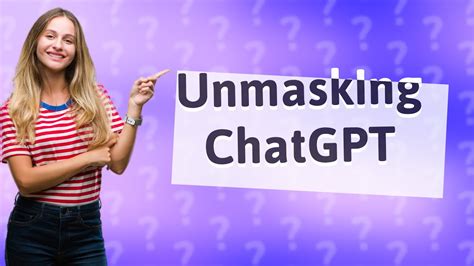ChatGPT, the cutting-edge AI language model from OpenAI, has sparked both excitement and concern in academia. As students become increasingly adept at using ChatGPT to complete assignments, professors are faced with the challenge of detecting its use. Here’s how your professor may identify if you’ve relied on ChatGPT for your work:

Stylistic Clues
- Stiff and Unnatural Language: ChatGPT often generates text that is grammatically correct but lacks the natural flow and nuance of human writing.
- Overuse of Transitional Phrases: ChatGPT frequently inserts transitional phrases, such as “however,” “moreover,” and “in addition,” to connect ideas, which can create an overly formulaic tone.
- Unusual Word Choice: ChatGPT may use words that are technically correct but uncommon in academic writing or the specific topic being discussed.
Content Analysis
- Lack of Citations: ChatGPT does not generate original research or cite sources, so if your paper lacks proper citations, it may raise suspicion.
- Superficial or Unoriginal Ideas: ChatGPT typically produces responses that are general, unoriginal, and lack in-depth analysis or critical thinking.
- Generic and Non-Specific Statements: ChatGPT often generates vague or overly broad statements that lack concrete evidence or specific examples.
Technical Fingerprints
- Repetitive Patterns: ChatGPT tends to produce repetitive sentence structures, phrases, or transitions, which can create a distinctive pattern in your writing.
- GPT-3-Specific Markers: Researchers are developing tools that can detect the unique linguistic patterns and word usage specific to GPT-3.
- Text Fingerprinting: Software can compare your text to a database of known AI-generated content, identifying anomalies or similarities that suggest the use of ChatGPT.
Common Mistakes to Avoid
- Relying Solely on ChatGPT: Using ChatGPT as a primary source of information or the sole generator of your work is highly discouraged and unethical.
- Failing to Edit and Cite: If you do use ChatGPT for assistance, thoroughly edit the output to ensure it fits the academic style and cite all sources.
- Copying Direct Output: Copying and pasting direct text from ChatGPT without modification is plagiarism and will be detected.
How to Use ChatGPT Responsibly
Step-by-Step Approach
- Identify Your Needs: Determine how you can use ChatGPT to supplement your learning, such as generating ideas or summarizing research.
- Utilize Its Strengths: Leverage ChatGPT to brainstorm ideas, translate complex concepts, or create writing outlines.
- Edit and Improve: Critically review ChatGPT’s output, refining the language, adding original insights, and citing sources.
- Acknowledge Its Use: If you use ChatGPT for assistance, be transparent with your professor and indicate its role in your work.
FAQs
- Can professors detect ChatGPT use 100% accurately?
Not yet. Detection methods are still being refined, and ChatGPT continues to evolve. - What happens if I’m caught using ChatGPT?
Consequences can vary depending on the institution and the specific policy in place. - Is using ChatGPT for homework considered cheating?
It depends on the university guidelines and the specific assignment. - What are the ethical considerations of using ChatGPT?
Proper citation and transparency are crucial to avoid plagiarism and maintain academic integrity.
Conclusion
While ChatGPT presents both opportunities and challenges in academia, professors have the tools and expertise to identify its use. By avoiding common mistakes, editing thoroughly, and using ChatGPT responsibly, students can harness its power while preserving the integrity of their work and academic achievement.
